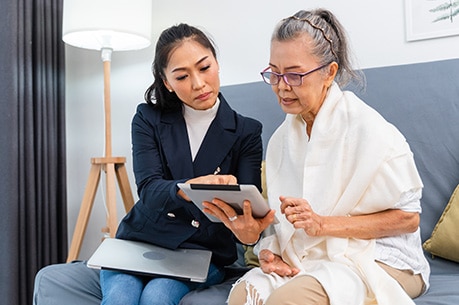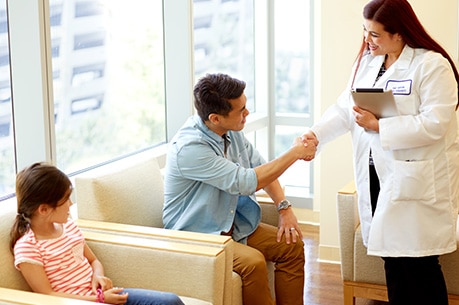You don’t want to spread the virus to those around you. Learn more about preventing the spread of respiratory viruses from the Centers for Disease Control and Prevention. And make sure to report your result to Kaiser Permanente through an e-visit.
COVID-19 testing information

There are 3 kinds of COVID-19 tests:
- COVID-19 self-tests, also known as home antigen tests, look for antigens or proteins from the virus in your body.
- Combo COVID-19 and flu self-tests look for antigens or proteins from the COVID-19 virus and flu virus in your body.
- PCR tests look for the virus’s genetic material in your body. These tests are typically done at a lab.
How do I get a COVID-19 self-test? You can get a self-test at a Kaiser Permanente facility or pharmacy, making it easy and convenient to pick one up after your next appointment. Self-tests are typically available at a reduced cost. Find a pharmacy near you.
Are the expiration dates on the self-test boxes accurate? The Federal Drug Administration (FDA) has extended the expiration dates on some brands of COVID-19 self-tests. To see if your brand has a new expiration date, visit the FDA’s website and type the brand name of the self-test into the search field. If your brand has a new expiration date, that means your self-test is reliable up to that date if you follow the manufacturer’s instructions.
Combo COVID-19 and flu self-tests
Some COVID-19 and flu symptoms are similar. Combo self-tests make it easy to test for COVID-19 and the flu at the same time. You can buy combo COVID-19 and flu self-tests at most Kaiser Permanente pharmacies.
How to take a self-test
Self-tests are highly accurate when you follow the manufacturer’s instructions. Your test results are usually ready within 15 minutes.
Remember, a negative self-test doesn’t mean you don’t have a virus. So, if you have symptoms, you should treat them at home and wear a mask until they go away. Then take another self-test within a few days to make sure that you don’t have COVID-19 or the flu.
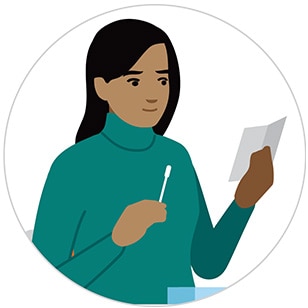
Step 1: Collect your sample
Insert the cotton swab into one of your nostrils and swirl according to the instructions. Repeat this in your other nostril.
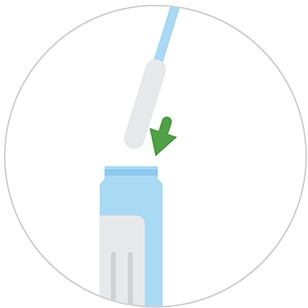
Step 2: Process your sample
Place the swab into the test tube and swirl it around according to the instructions.
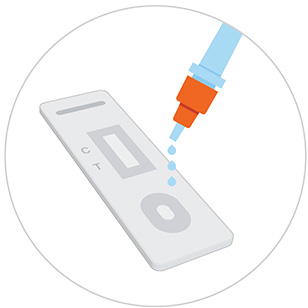
Step 3: Test your sample
Squeeze a few drops of your sample onto the test strip according to the instructions, then wait 15 minutes.
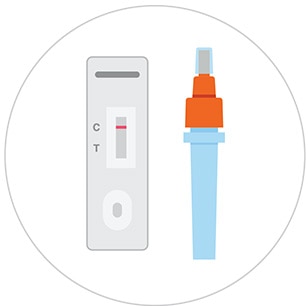
Step 4: Read your results
After 15 minutes, your self-test is ready. Read the test instructions to see if your test shows a positive or negative result. Even a faint or fading line can mean a positive result.
About positive COVID-19 test results
About negative COVID-19 test results
If you tested negative while having symptoms and you followed the testing instructions correctly, it’s possible that you don’t have COVID-19. However, this negative result doesn’t completely confirm that you're free from infection.
It’s important to follow the manufacturer’s instructions for performing the test at home to increase the likelihood of an accurate result.
If you have concerns or if your symptoms worsen, visit kp.org/getcare or use our mobile app to access care, including an e-visit or video visit.
Learn more about testing for COVID-19 from the Centers for Disease Control and Prevention.
Exposure to COVID-19
For information on what to do if you come in close contact (less than 6 feet for more than 15 minutes) with someone who has COVID-19, read the guidance about testing for COVID-19 from the Centers for Disease Control and Prevention.
Reimbursement for testing
In most cases, Kaiser Permanente doesn’t reimburse for the cost of COVID-19 self-tests.
If you’re a Medicaid recipient and a Kaiser Permanente patient, self-tests are covered at no cost to you. Reimbursement is limited to 12 self-tests per month, including shipping and sales tax. You can submit a claim for reimbursement at kp.org.
All other plan members will need to mail in a completed member reimbursement form for medical claims to the following address:
KPWA Claims Administration
P.O. Box 30766
Salt Lake City, UT 84130-0766
Your claim must include an itemized receipt with the test name, purchase date, price, and number of tests purchased.
By submitting a claim for reimbursement, you’re attesting you purchased the self-test for personal use. The test wasn’t for employment purposes unless required by applicable state law; wasn’t and won’t be reimbursed by another source; and wasn’t for resale.
Many facilities bill Kaiser Permanente directly, so you may not have to pay anything out of pocket. If you were tested and charged by a licensed, independent facility, you can submit a claim for reimbursement.
- Print the medical claims reimbursement form.
- Mail the completed form with supporting documentation for reimbursement to:
KPWA Claims Administration
P.O. Box 30766
Salt Lake City, UT 84130-0766
Your claim must include an itemized receipt with the test name, purchase date, price, and number of tests purchased.
We can update your electronic health record if you send us a photo or a scanned copy of your test results. Simply sign into your kp.org account, go to the “Message Center,” and send a message to your care team. Make sure to:
- Use “Medical record or forms” as your subject line
- Click the paper clip “Attach” link at the bottom of the message to add a photo or scan of your results
- Include your name
Connecting to care
